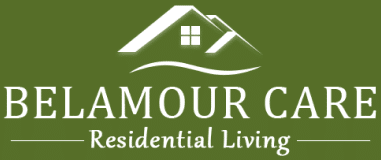Tax Deductions for Assisted Living Expenses
Assisted living expenses can be a financial burden, especially for seniors who are living on a fixed income. Fortunately, the IRS offers tax deductions for those who are paying for assisted living expenses. In this article, we will provide a comprehensive guide to help you understand the tax deductions that are available for assisted living expenses.
Medical Expense Deduction
The most commonly known tax deduction for assisted living expenses is the medical expense deduction. This deduction is available to taxpayers who itemize their deductions on their tax returns. To be eligible, the assisted living expenses must be necessary and considered medical expenses. This means that expenses must be incurred to diagnose, treat, or prevent a medical condition.
The IRS has strict rules on what constitutes a medical expense, but generally, any expenses incurred for the care of an elderly individual that would normally be deductible if incurred for the care of any other individual are considered to be deductible medical expenses. This includes expenses for nursing homes, assisted living facilities, and home health care.
To claim the medical expense deduction, taxpayers must have incurred expenses that are more than 7.5% of their adjusted gross income (AGI). For example, if your AGI is $50,000, you can only deduct medical expenses that exceed $3,750.
Long-Term Care Insurance Deduction
Another tax deduction for assisted living expenses is the long-term care insurance deduction. This deduction is available to taxpayers who have purchased long-term care insurance to cover their assisted living expenses. The long-term care insurance deduction is limited to the amount of premiums that you paid during the tax year up to a specified dollar limit that is adjusted each year for inflation.
Dependent Care Tax Credit
The dependent care tax credit is another option for taxpayers who are paying for assisted living expenses. This tax credit is available to taxpayers who are caring for a dependent who is physically or mentally unable to care for themselves. The dependent care tax credit is equal to 20% to 35% of the expenses incurred, up to a specified dollar limit that is adjusted each year for inflation.
State Tax Credits
In addition to the federal tax deductions and credits, some states also offer tax credits for assisted living expenses. For example, some states offer property tax credits, sales tax exemptions, or income tax credits for seniors who are paying for assisted living expenses. To find out if your state offers any tax credits for assisted living expenses, you can contact your state tax agency.
Conclusion
Assisted living expenses can be a significant financial burden for seniors, but the IRS and some states offer tax deductions and credits to help ease the burden. In this article, we have provided a comprehensive guide to the tax deductions that are available for assisted living expenses, including the medical expense deduction, long-term care insurance deduction, dependent care tax credit, and state tax credits.
By understanding the tax deductions that are available, seniors can potentially save money on their assisted living expenses and improve their financial stability.
If you’re looking for a supportive and knowledgeable resource, we invite you to reach out to us at 360-608-9087. Our Belamour Care team is here to offer guidance, answer questions, and help you take the next step toward your goals. We believe in the power of community and the importance of collaboration, and we’re excited to work with you. So don’t hesitate, to make the call t and let’s start this journey together.



